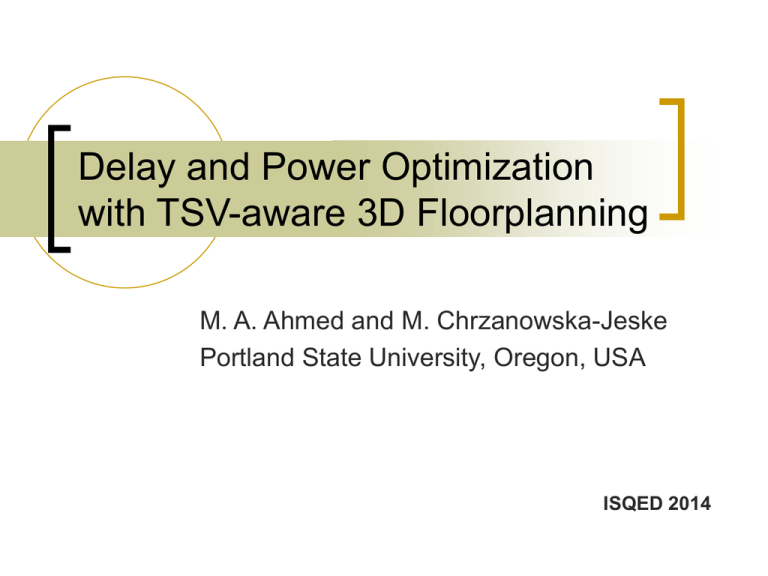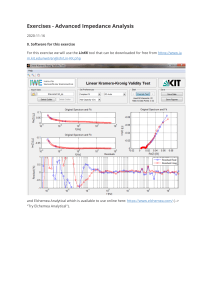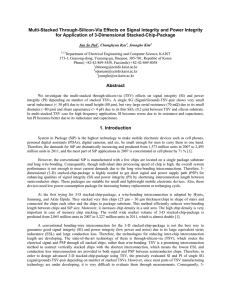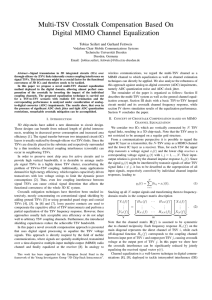Delay and Power Optimization with TSV
advertisement

Delay and Power Optimization with TSV-aware 3D Floorplanning M. A. Ahmed and M. Chrzanowska-Jeske Portland State University, Oregon, USA ISQED 2014 Outline Introduction Electrical Characteristics of 3D Interconnect 3D-Interconnect Electrical Performance TSV Aware 3D Floorplanning Experimental Results Conclusions Introduction 3D technology facilitates reduction in wirelength by vertically stacking dies. TSVs are used to connect inter-die signals, and the RC value of a single TSV depends on TSV dimensions, technology and used materials. It is crucial to consider RC values of TSVs early in the design phase to evaluate and optimize electrical performance of 3D ICs. Introduction This paper proposed a TSV-aware 3D floorplanning tool that concurrently places TSV islands with circuit blocks. Electrical Characteristics of 3D Interconnect TSV Capacitance CTW: coupling capacitance between a TSV and wires surrounding the TSV CTT: coupling capacitance between TSVs Electrical Characteristics of 3D Interconnect TSV Resistance The expression for TSV resistance is given by: is the resistivity of the material lTSV is the height of TSV ATSV is area of the TSV Electrical Characteristics of 3D Interconnect Wire Resistance and Capacitance Electrical Characteristics of 3D Interconnect Wire Resistance and Capacitance 3D-Interconnect Electrical Performance Interconnects Delay 3D-Interconnect Electrical Performance Interconnects Delay The difference between the interconnect delay in two cases will be significant if TSV delay is large. The floorplanners without TSV delay will treat these cases similarly. 3D-Interconnect Electrical Performance Interconnects Power Consumption TSV Aware 3D Floorplanning Experimental Results Experimental Results Experimental Results Experimental Results Experimental Results Conclusions This paper presented and discussed delay and power results of a novel TSV-aware 3D floorplanning flow with TSV islands.











